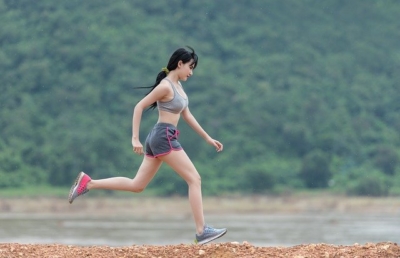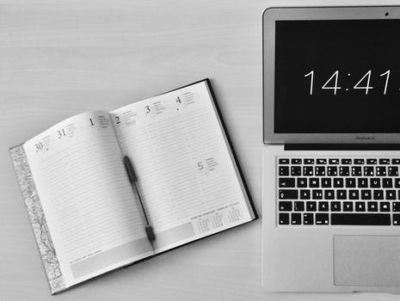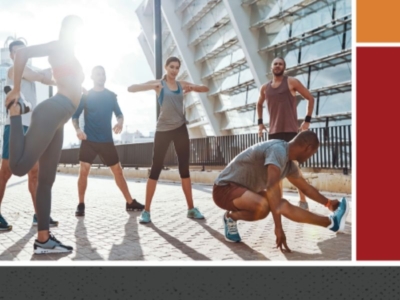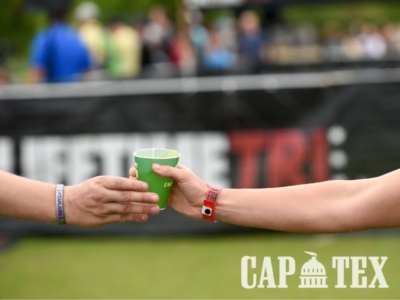Triathlon Training After 40: What You Need to Know
Age is just a number; of course you can start triathlon training after 40!
Triathlon involves mastering three sports – swimming, cycling, and running. This makes many people over the age of 40 think that triathlon isn’t for them. But that line of thinking just isn’t true. Triathlon training after 40 is possible and you can do it!

Don’t wait any longer, start your training today with an easy run.
How you train changes as you age. If you’re 40 years or older, then you need to pick a training plan that meets your needs. Focus on strength and endurance training. That’ll give you the foundation you need to get started on your triathlon journey. Many of the world’s top triathletes are over the age of 40. This proves triathlon training after 40 is possible. Below is everything you need to know to jumpstart your training today!
You can complete a triathlon at any time, especially if you start training after 40
The first thing you need to do is to visualize your end result: crossing the finish line. Visualize yourself doing that. This helps remind yourself that you can finish a triathlon. More importantly, it helps you to establish a long-term goal. When you know what you’re long-term goals are, you can set short-term goals that’ll help you get there. Next, choose a particular finish line, like CapTex Triathlon’s downtown Austin one, and register. You have to make the goal a real one. Registering for a triathlon gives you that goal. Now you can incorporate the advice below and begin triathlon training after 40.
-
Start today
Training is the first step in helping you reach your goals. Instead of using excuses for why you shouldn’t train, find reasons why you should begin. This will help you get the ball rolling and help you follow your plan. When you’re starting out you don’t have to run ten miles the first day.

Wake up earlier and knock your goals out in the morning.
Start small, with a 2-mile run. Tomorrow you can ride your bike for 45 minutes. Next, add in swimming an amount of time that’s comfortable for you. The amounts are up to you, but you have to start. You’ll eventually increase your time and distance. Getting your body used to the training process is a core part of your training, especially if you’re a beginner. Add to your preparation when you know what to expect at your first triathlon.
-
Follow your training plan
As people age, their muscle mass and bone density become lower than when they were younger. This means that you need to focus on building your strength and endurance if you start triathlon training after 40. Creating and following your training plan helps inform you of what you need to do every day. You’ll gain the motivation you need as well. A triathlon training plan also helps you track your progress. Pro tip: get over your fear of open-water swimming with these 5 tips.
-
Wake up earlier

Cycling to work is a great workout.
As someone who is training after 40, you may feel as if you don’t have enough time. This isn’t true. There’s plenty of time, you just have to adjust your schedule. For example, wake up one hour earlier for the first few months of training. Now you’ve finished your workout before work.
Your life is busy with family and friends, work, and hobbies. It’s possible to incorporate training into your everyday life and not sacrifice any of that when you begin training after 40. Cycle to work instead of driving. Knock out your training, increase your bike mileage, and reduce your carbon footprint. Go for runs near your house. Find a swimming pool nearby so you can swim. Finding ways to increase the chance you work out helps you be consistent with your training.
-
Use the gear you have
When you start training, you may already have the 6 items every beginner triathlete must have. This list includes running shoes, swimming trunks, and a road/mountain bike. Maybe you’ve seen or heard about expensive equipment that can improve your time. You don’t need that in the beginning. Work with what you have so you can begin your triathlon training as soon as possible. As you continue to train, you can slowly upgrade your gear with new equipment.
-
Join a triathlon group

There are many benefits to joining a triathlon group.
Definitely join a triathlon training group near you. They’ll have veteran triathletes who can offer you great advice like how you can tell if you’re dehydrated. Triathlon training groups also act as a strong motivating force and might have a beginner group you can train with. They also might offer information on training plans, nutrition/hydration advice, and beneficial discounts. Those discounts could help you save money. Most importantly, you’ll be surrounded by like-minded people who can act as a strong motivating force.
Triathlon training after 40 is a rewarding experience. You’ll try something new and improve your health. Who knows, you just might meet your goals this year! Remember, age is just a number. Learn how this Rookie Triathlon Ambassador began training at the young age of 52!

 Adding a warm-up and cool down into your fitness routine is a simple, yet proven way to maximize your benefits when working out. The warm-up gives your body a chance to prepare for your session while the cool-down then helps you focus on slowing your breathing and return to your normal heart rate. Rather than seeing it as an optional part of your workout, think of warming up and cooling down as part of your session to get the most out of all the hard work you’ve put in!
Adding a warm-up and cool down into your fitness routine is a simple, yet proven way to maximize your benefits when working out. The warm-up gives your body a chance to prepare for your session while the cool-down then helps you focus on slowing your breathing and return to your normal heart rate. Rather than seeing it as an optional part of your workout, think of warming up and cooling down as part of your session to get the most out of all the hard work you’ve put in!
